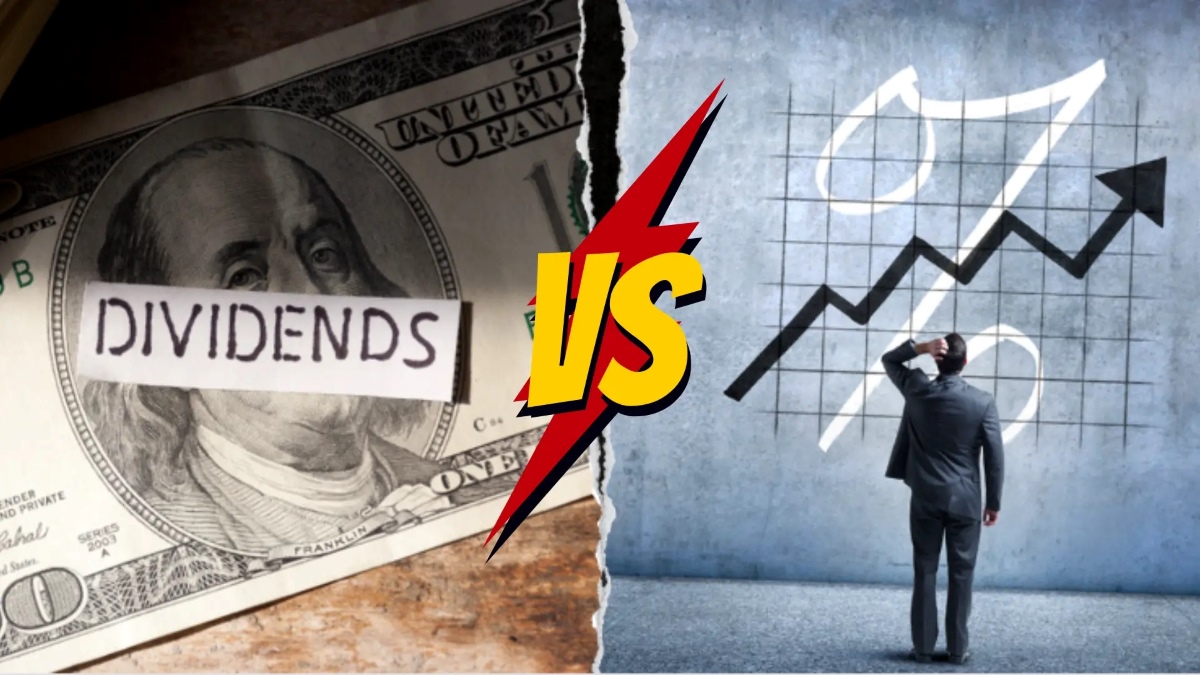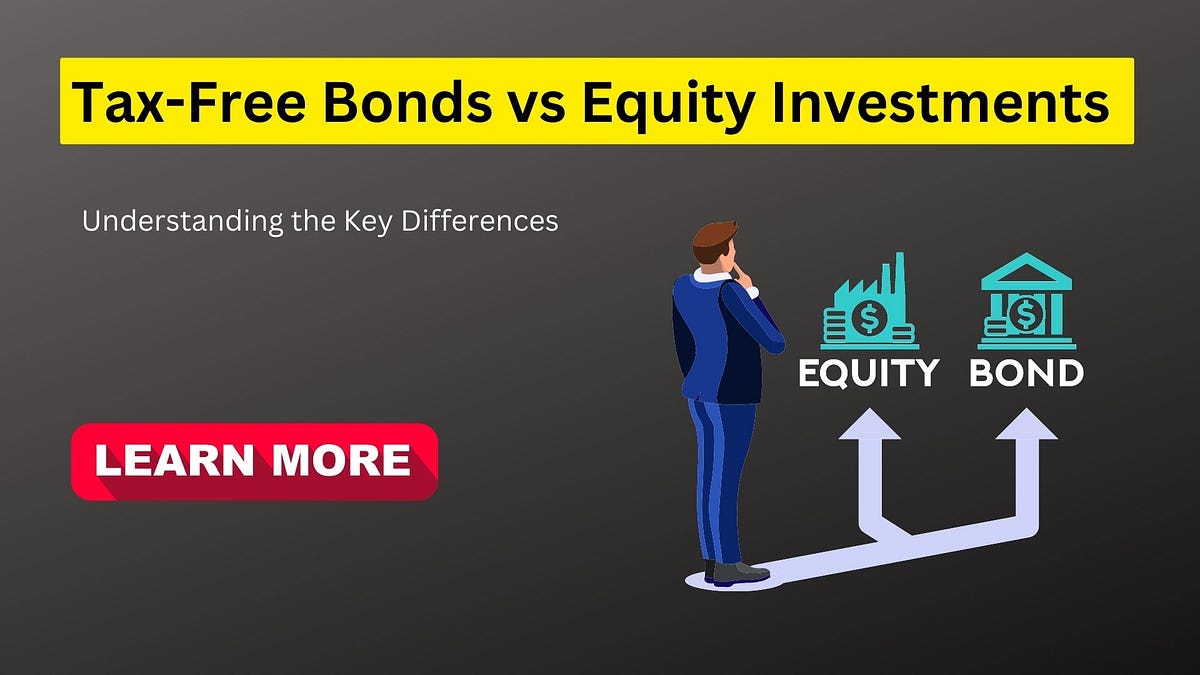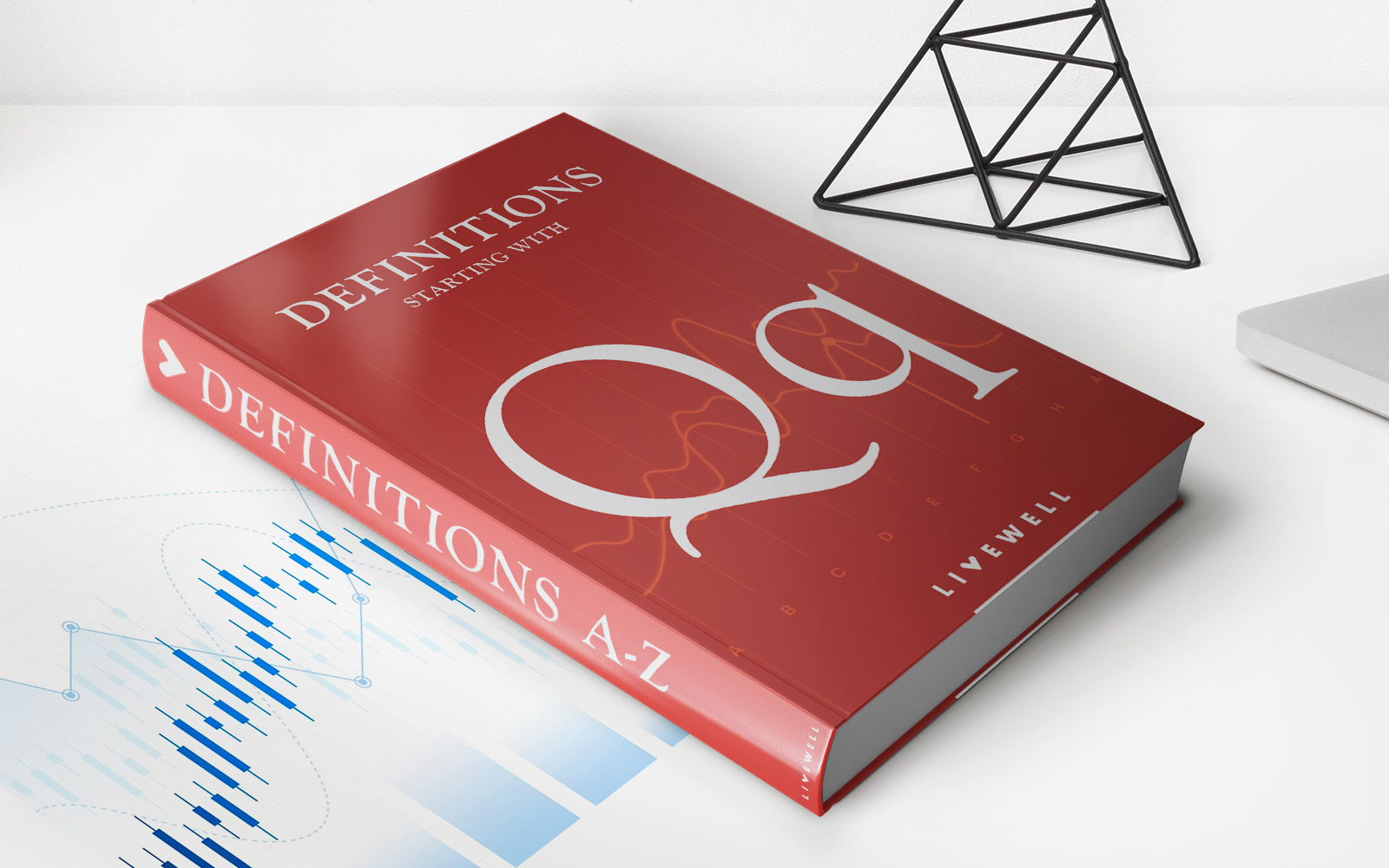Home>Finance>What Is The Difference Between Accounting Profit And Economic Profit


Finance
What Is The Difference Between Accounting Profit And Economic Profit
Published: October 9, 2023
Understand the distinction between accounting profit and economic profit in finance. Learn how they differ and their implications for businesses.
(Many of the links in this article redirect to a specific reviewed product. Your purchase of these products through affiliate links helps to generate commission for LiveWell, at no extra cost. Learn more)
Table of Contents
Introduction
In the world of finance, profit is a crucial metric for measuring the success and viability of a business. However, it’s important to understand that not all profits are created equal. When we delve into the realm of finance, we encounter two types of profits: accounting profit and economic profit. While both are used to assess a company’s financial performance, they have distinct definitions and implications.
Accounting profit is the traditional measure of profit that is calculated by subtracting total expenses (including explicit costs like wages and rent) from total revenue. It focuses on the monetary aspect of a company’s operations and provides a snapshot of its financial health based on the revenues and costs recorded on the balance sheet and income statement. On the other hand, economic profit takes a more comprehensive approach by incorporating both explicit costs and implicit costs, such as opportunity costs and the cost of capital.
The difference between accounting profit and economic profit is not merely semantic; it has significant implications for businesses and investors. Accounting profit is a valuable tool for assessing short-term financial performance and compliance with financial reporting standards. However, economic profit provides a more accurate reflection of a company’s long-term viability and ability to create value. Understanding the nuances and disparities between accounting profit and economic profit is essential for making informed business decisions and evaluating investment opportunities.
In this article, we will explore the key differences between accounting profit and economic profit, examine the factors that contribute to these disparities, and highlight the importance of understanding these differences in the context of financial analysis and decision-making. By gaining a clear understanding of these concepts, individuals and businesses can enhance their financial acumen and make sound financial decisions. Let’s dive in and explore the intricacies of accounting profit versus economic profit.
Accounting Profit
Accounting profit is a commonly used measure to assess the financial performance of a company. It is calculated by subtracting total expenses, including both explicit costs (such as wages, rent, and materials) and depreciation, from total revenues. The result represents the excess of revenues over explicit costs, providing an overview of the profitability of a company’s operations.
Accounting profit is primarily focused on the monetary aspect of a business and is based on the information recorded in the company’s financial statements. It takes into account the revenues earned and the expenses incurred during a specific period, usually a fiscal year. This information is then used to prepare financial statements, such as the income statement, which presents the revenues, expenses, and resulting profit or loss.
It’s important to note that accounting profit does not consider certain factors that may impact the long-term viability of a business. For example, it does not account for opportunity costs or the cost of capital. Opportunity costs refer to the value of the next best alternative foregone when choosing a particular course of action. The cost of capital, on the other hand, represents the return that could be earned by investing the company’s resources elsewhere.
Accounting profit provides valuable insights into a company’s financial performance over a specific period. It helps evaluate the efficiency of operations, cost management, and revenue generation. This information is essential for various stakeholders, including shareholders, lenders, and potential investors, as it allows them to assess the company’s profitability and make informed decisions.
However, it’s important to recognize that accounting profit is a historical measure that focuses on past performance. It may not capture the full economic reality of a business, as it does not consider implicit costs, such as the value of the owner’s time and labor, or changes in market conditions. To obtain a more comprehensive view of a company’s performance and potential, we need to delve into the concept of economic profit, which goes beyond the accounting numbers and considers the opportunity costs and the cost of capital.
Economic Profit
While accounting profit provides valuable insights into a company’s financial performance, it fails to account for certain economic factors and opportunity costs. This is where economic profit comes into play. Economic profit is a more comprehensive measure of profitability that takes into consideration both explicit costs and implicit costs, providing a deeper understanding of a company’s true financial performance.
To calculate economic profit, we begin with the same revenue and explicit costs used to calculate accounting profit. However, economic profit goes a step further by deducting all implicit costs, including opportunity costs and the cost of capital. Opportunity costs refer to the forgone value of the next best alternative when a particular decision is made. This includes the value of the owner’s time, resources, and talents that could have been deployed in alternative ventures.
In addition to opportunity costs, economic profit also considers the cost of capital. The cost of capital represents the rate of return that could be earned by investing the company’s capital elsewhere. This cost reflects the risk associated with the investment and the expected return on alternative investments in the market. By incorporating the cost of capital, economic profit provides a more accurate assessment of the company’s overall financial performance.
The concept of economic profit is crucial for evaluating the long-term viability and sustainability of a business. Positive economic profit indicates that the company is generating value and earning returns that exceed the opportunity costs and the cost of capital. This suggests that the company is efficient, competitive, and able to create value beyond what is considered normal in the industry.
On the other hand, negative economic profit indicates that the company is not generating sufficient returns to cover both explicit and implicit costs. This suggests that the company may need to reassess its operations, pricing strategies, or resource allocation to improve profitability. Negative economic profit can also signal that the opportunity costs and the cost of capital associated with the business exceed potential returns, making it a less attractive investment.
Understanding and analyzing economic profit is vital for businesses, investors, and financial analysts. It provides a more comprehensive assessment of a company’s profitability and helps identify areas for improvement. By considering both explicit and implicit costs, economic profit provides insights into the true financial performance of a business and helps inform strategic decisions, such as pricing strategies, investment choices, and resource allocation.
Differences between Accounting Profit and Economic Profit
While accounting profit and economic profit both aim to measure the profitability of a business, there are several key differences between the two metrics. These differences lie in the factors they consider and the implications they have for assessing a company’s financial performance. Let’s explore these differences in more detail.
- Cost Consideration: Accounting profit only takes into account explicit costs, such as wages, rent, and materials, while economic profit considers both explicit costs and implicit costs, such as opportunity costs and the cost of capital. By factoring in implicit costs, economic profit provides a more comprehensive view of a company’s financial performance.
- Time Horizon: Accounting profit focuses on short-term financial performance, typically based on a specified accounting period. On the other hand, economic profit considers the long-term viability of a business by accounting for future income streams, opportunity costs, and the return on capital over the investment period.
- Use of Historical Data: Accounting profit relies on historical data from the financial statements to calculate profit. Economic profit, on the other hand, incorporates forward-looking information, such as future earnings potential and alternative investment opportunities.
- Measurement of Success: Accounting profit is often used as a measure of success for a company, as it represents the excess of revenues over explicit costs. Economic profit, however, provides a more accurate assessment of a company’s success by considering all costs, both explicit and implicit, and comparing them to alternative investment opportunities.
- Impact of Opportunity Costs: Opportunity costs, which are the value of the next best alternative foregone, are not considered in accounting profit. In economic profit, however, opportunity costs play a significant role in decision-making and measuring profitability. By incorporating opportunity costs, economic profit reflects the true cost of resources used and the potential returns that could have been earned in alternative ventures.
In summary, accounting profit focuses on short-term financial performance based on historical data, while economic profit takes a more comprehensive and forward-looking approach by considering both explicit and implicit costs. Economic profit accounts for opportunity costs and the cost of capital, providing a more accurate assessment of a company’s long-term viability and potential for creating value.
Understanding the differences between accounting profit and economic profit is crucial for businesses, investors, and financial analysts. It helps in evaluating the true financial performance of a company, making informed strategic decisions, and assessing investment opportunities. By considering both explicit and implicit costs, economic profit provides a more robust measure of a company’s profitability and sustainability in the long run.
Factors Affecting the Difference between Accounting Profit and Economic Profit
Several factors contribute to the disparity between accounting profit and economic profit. These factors play a significant role in determining the true financial performance of a business and understanding the difference between the two metrics. Let’s explore some of the key factors that impact this difference.
- Explicit and Implicit Costs: One of the primary factors affecting the difference between accounting profit and economic profit is the consideration of explicit and implicit costs. Accounting profit only takes into account explicit costs, such as wages, rent, and materials, while economic profit incorporates both explicit and implicit costs, including opportunity costs and the cost of capital.
- Opportunity Costs: Opportunity costs are a critical component of economic profit. They represent the value of the next best alternative foregone when choosing a particular course of action. Accounting profit does not incorporate opportunity costs, as it focuses solely on explicit costs and revenue. However, economic profit acknowledges the value of the resources and opportunities that could have been pursued in alternative ventures.
- Cost of Capital: The cost of capital is another significant factor in the difference between accounting profit and economic profit. Economic profit considers the return that could be earned by investing the company’s capital elsewhere. It emphasizes the opportunity cost of using capital in the current business instead of alternative investments. The cost of capital reflects the risk associated with the investment and the expected return that could be earned from other investment opportunities.
- Time Horizon: The time horizon over which profit is measured makes a difference between accounting profit and economic profit. Accounting profit focuses on short-term financial performance within a specified accounting period. Economic profit, on the other hand, takes a longer-term perspective and considers the sustainability and lasting value of the business. It accounts for future income streams, opportunity costs, and returns on capital over the investment period.
- Market Conditions: Differences in market conditions can impact accounting profit and economic profit. Accounting profit relies on historical financial data and may not reflect changes in market dynamics or competitive landscapes. Economic profit takes into account the broader market environment, including the potential for alternative investment opportunities with different risk-return profiles.
These factors, among others, contribute to the difference between accounting profit and economic profit. While accounting profit provides a useful measure of short-term financial performance, economic profit offers a more comprehensive evaluation of a company’s profitability, considering all costs and opportunities forgone. By understanding and considering these factors, businesses and investors can gain a better understanding of the true financial performance and long-term viability of a company.
Importance of Understanding the Difference between Accounting Profit and Economic Profit
Understanding the distinction between accounting profit and economic profit is crucial for businesses, investors, and financial analysts. It provides valuable insights into a company’s financial performance, helps inform strategic decision-making, and allows for a more accurate assessment of a company’s long-term viability. Let’s explore the importance of understanding this difference in more detail.
- Realistic Financial Evaluation: By recognizing the disparity between accounting profit and economic profit, businesses can better evaluate their financial performance. Accounting profit may paint a rosy picture of success in the short term, but economic profit provides a more comprehensive view by accounting for all costs and opportunity costs. This helps businesses understand their true profitability and identify areas where they can improve efficiency and create more value.
- Strategic Decision-Making: Understanding the difference between accounting profit and economic profit is essential for making informed strategic decisions. Economic profit incorporates opportunity costs and the cost of capital, enabling businesses to assess the potential returns of alternative investment opportunities. This information helps in resource allocation, pricing strategies, and investment decisions, ensuring that businesses maximize their long-term profitability and stay competitive in the market.
- Investment Evaluation: Investors need to understand the distinction between accounting profit and economic profit to evaluate investment opportunities accurately. Accounting profit may provide a snapshot of a company’s financial performance, but economic profit offers a more reliable measure of a company’s ability to generate sustainable returns. By considering implicit costs and opportunity costs, investors can assess the long-term viability and value potential of a business before making investment decisions.
- Identifying Value-Creating Opportunities: Economic profit helps businesses identify value-creating opportunities by considering explicit and implicit costs. By accounting for opportunity costs, businesses can assess the potential returns of alternative ventures and determine the most profitable allocation of their resources. This helps businesses optimize their operations, improve efficiency, and pursue strategies that generate the highest economic profit.
- Long-Term Viability: Economic profit is a more accurate gauge of a company’s long-term viability and sustainability. It considers both explicit and implicit costs, providing a clearer picture of a company’s profitability beyond short-term financial indicators. By understanding the difference between accounting profit and economic profit, businesses can make adjustments to their operations, pricing, and investment strategies to ensure long-term profitability and success.
In summary, understanding the difference between accounting profit and economic profit is vital for accurate financial evaluation, informed strategic decision-making, and evaluating investment opportunities. By considering all costs, including implicit costs and opportunity costs, businesses can gain a more comprehensive view of their profitability and identify areas for improvement. Similarly, investors can assess the value potential of a business by evaluating its economic profit. By understanding and using both metrics appropriately, businesses and investors can make sound financial decisions and enhance their long-term success.
Conclusion
In the realm of finance, understanding the difference between accounting profit and economic profit is essential for accurately assessing a company’s financial performance and making informed decisions. While accounting profit focuses on short-term monetary performance based on explicit costs, economic profit provides a more comprehensive evaluation that incorporates both explicit and implicit costs, such as opportunity costs and the cost of capital. By recognizing this distinction, businesses can gain a deeper understanding of their true profitability and make strategic decisions that maximize long-term value creation.
Accounting profit serves as a useful measure for evaluating short-term financial performance and complying with financial reporting standards. It provides insights into revenues, explicit costs, and the resulting profit or loss. However, economic profit goes beyond accounting profit by considering all costs and opportunity costs, capturing the true financial reality of a business. Economic profit incorporates implicit costs, such as the value of forgone resources and alternative investment opportunities, providing a more accurate picture of a company’s long-term viability.
Understanding the difference between accounting profit and economic profit enables businesses to make strategic decisions that drive profitability and growth. It helps identify value-creating opportunities, optimize resource allocation, assess pricing strategies, and evaluate investment endeavors. By considering opportunity costs and the cost of capital, businesses can ensure that they are using their resources efficiently and generating sustainable returns.
For investors, understanding the distinction between accounting profit and economic profit is critical in evaluating investment opportunities. By focusing on economic profit, investors can assess the long-term value potential of a company and make informed investment decisions. Economic profit provides a more comprehensive measure of a company’s financial performance and sustainability, allowing investors to identify businesses with the highest potential for generating returns and creating value.
In conclusion, accounting profit and economic profit are two measures that provide different perspectives on a company’s financial performance. Accounting profit offers a snapshot of short-term monetary performance, while economic profit captures the broader picture by accounting for all costs and opportunity costs. Recognizing the difference between these metrics is crucial for businesses and investors to make informed decisions, optimize financial strategies, and drive long-term success. By understanding and utilizing both accounting profit and economic profit, stakeholders can navigate the complex world of finance with more accuracy and confidence.














